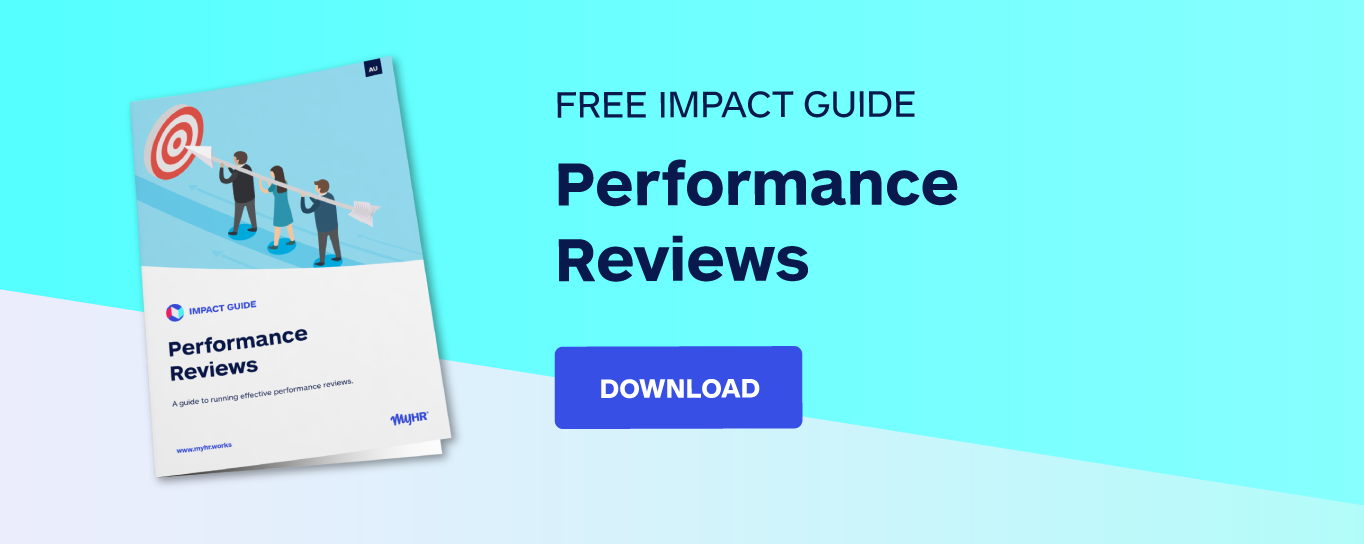A key factor in successful business ownership and management, at all sizes and in all industries, is managing your people well and ensuring that every employee’s career is progressing as both the business and person expect.
Recent research by online employment marketplace, SEEK, found 23% of Australian employees intended to move jobs in the next 6 months and a lack of promotional opportunities was the second biggest driver of people seeking new employment.
In a demanding labour market, not only are you doing the right thing by your people in helping them grow and embrace new challenges, you’re also doing the right thing by the company in ensuring that you retain your talented employees and develop new leaders so the business can thrive.
Promotion can take many forms, e.g. increasing an employee’s current responsibilities, changing their title, or giving them a team to manage. These are all ways of stretching their capabilities and recognising that they’re ready for the next step in your business.
How to tell an employee is ready for promotion
When considering promoting your star performers, there are some key signs to look for that will help you assess who’s in the right place for a promotion:
1. Responds to challenges and learns from mistakes
Stepping up into a role, whether it’s a first management role or a more senior technical role, brings it’s own set of challenges that an employee will need to be capable of rising to.
If they are used to stretching and developing themselves and show that they can make mature decisions, a promotion will come easier than if the person prefers to remain comfortable in their work.
2. Identifies and solves problems
Continuous improvement gets talked about a lot, and if an employee has already walked the walk (even by implementing minor improvements) then they have demonstrated that they're engaged and thinking about the problems and opportunities the business faces on a daily basis.
This attitude will serve them well when they are in a new role, facing new problems in learning the ropes, and solving problems for you (and your customers).
3. Understands the “why” of the business and has commercial perspective
Long term, you want a team of trusted employees who “get it” – they understand the external and internal pressures on the business, have a clear sense of your priorities as the business owner (or manager), and can focus their efforts accordingly.
If the person is already being exposed to and thinking about what’s best for the company and how their work plays a part in that bigger picture, they will bring that thinking to bear on new responsibilities or a new team and continue driving results that service the bigger picture.
4. Shows management and leadership skills
This may seem obvious, but if anyone is going to be given more responsibility, they need the skills to be able to manage not only their own workload, but also other people and the multiple priorities that come with leading a team.
You're looking for someone who's proven they work well with others, can listen and apply new ideas, is able to effectively allocate their time, and doesn't get overwhelmed by change or conflict.
5. Already asked about new opportunities
Clearly, not all employees who are thinking about their career development or new opportunities will ask about them; but if they have, it’s a clear indication that they’re thinking about the next step and that they’re ready for a conversation about what that might be.
Frank and open discussions about career development are a powerful tool if used right; make sure that you’re considering requests or suggestions from your employees, and regularly spending time thinking about your larger strategic plan so that you can intelligently discuss upcoming or potential opportunities with your team.
Remember to discuss opportunities with your quieter or less assertive employees too; don’t let the loudest ones distract you from the rest of the talent in your team!
Locking in success
So, you’ve identified who you want to promote and you’re ready to move them into a new position. In our experience, there are some common pitfalls you want to avoid.
Here’s what you can do to provide support and ensure they continue to succeed:
1. Support a smooth transition
As capable as a person may be, a new role is its own challenge and you’ll need to make sure that the promoted employee has the support to succeed, while having the space to breathe and learn as they go.
Weekly or fortnightly catch-ups are invaluable in giving you insight into how your newly-promoted grasshopper is going.
Talk to their manager (if that’s not you) and make sure that the employee’s self-assessments line up with other people's. Highlight accomplishments to build their confidence and security.
If they ask for more support, which might be additional guidance or training, look to bring in someone to act as mentor, or provide more resources to achieve their targets. Make sure you do what you can to accommodate them or work to resolve their concerns, and deliver on your commitments.
2. Set clear expectations and targets
The person will be excited and keen to do a good job,but don't assume they will understand exactly what is expected from them in their new role.
Be sure to provide them with a clear plan to guide them in their first month, 3 months, or 6 months in the role. This could be specific targets to meet (e.g. “Reduce website downtime by 15%”, or “Increase sales of products by 5%”) or guidance for prioritising (e.g.”Focus on spending time with your new team to build trust with them”, or “Have a strategy for the second half of the year drafted in 4 weeks”).
This is not to say it’s enough to hand the person a list of targets, then vanish for 6 months and reappear to assess how they performed; stay in regular touch and ensure that things are progressing as expected.
3. Allow enough space for learning and growth
Micromanagement is notorious for stifling the creativity, drive, and general will-to-live of those being micromanaged, so it’s important that while you’re providing support and guidance per points 1 and 2, you’re balancing that by giving the new promotion enough space to make their own decisions and to own their performance and behaviour.
This balance will be different for each employee: some will need a bit more hand-holding to feel comfortable, while others prefer to charge ahead and learn from the consequences.
4. Analyse the old role
You might be looking to restaff the vacant role internally or recruit externally; either way, if you’re not close to the position yourself then the insight and feedback of the person leaving will be invaluable in ensuring that you can make changes to the job description if needed, advertise for the right kind of person with the right skills, and talk to potential hires honestly about what they can expect in the job.
This might take the form of a formal debrief, or a more informal chat when the time comes for you to start the search for a replacement.


